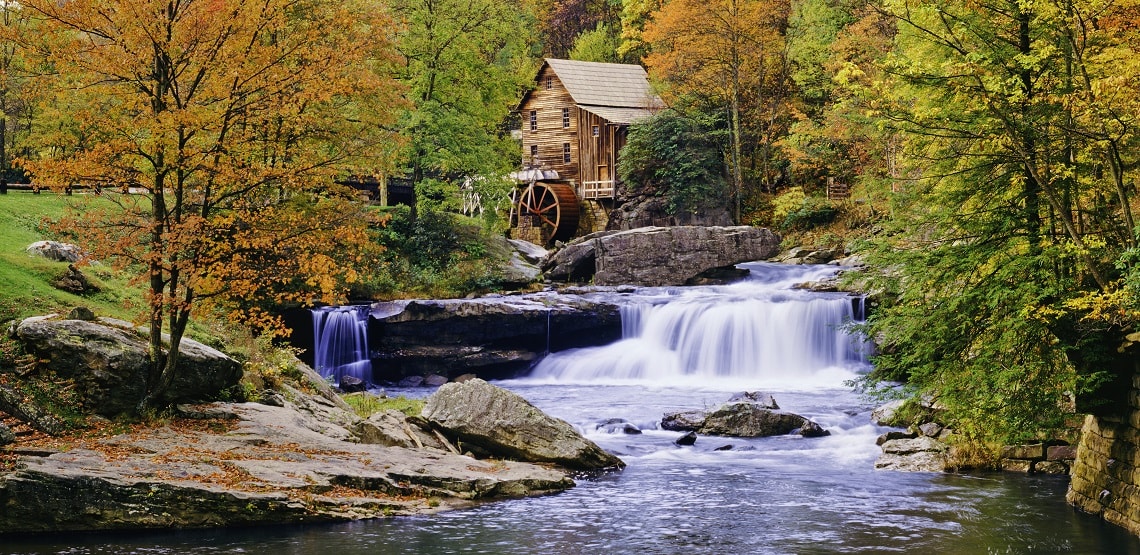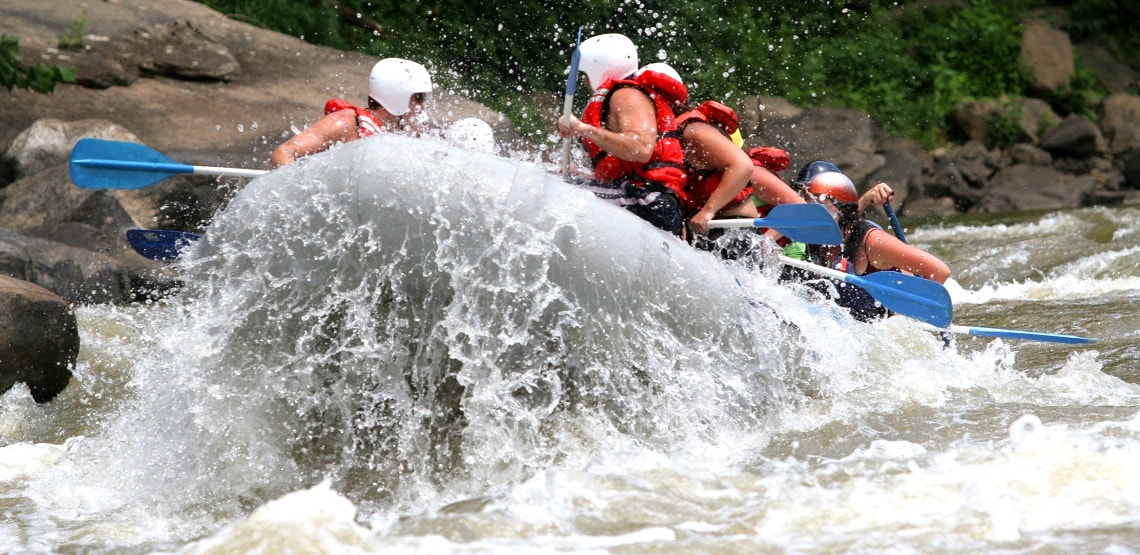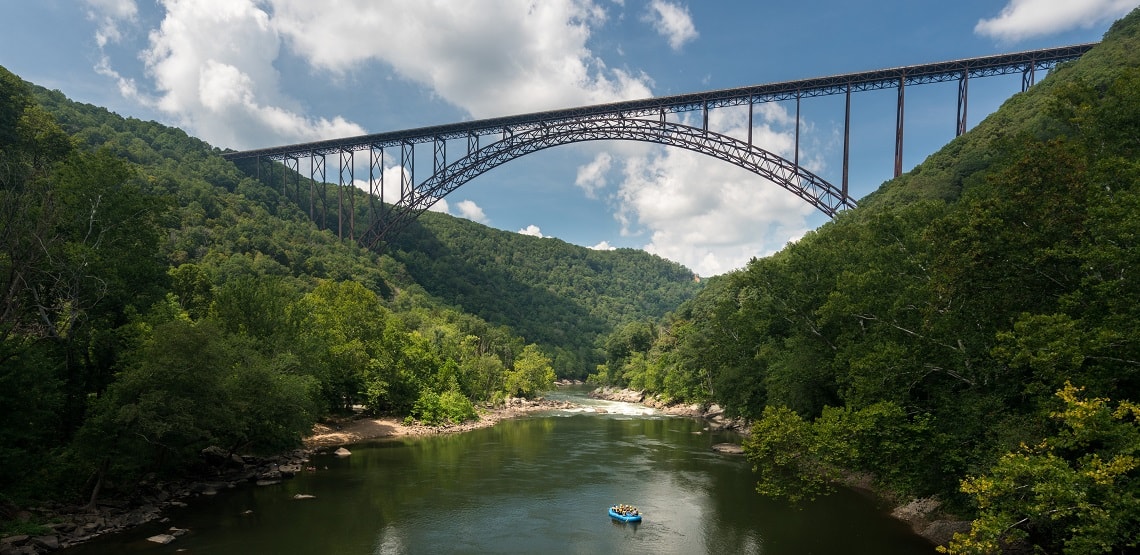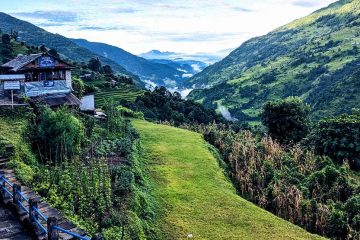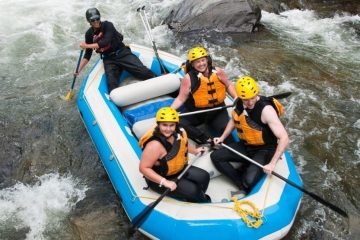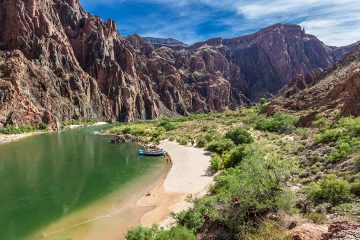A Hidden Gem for Thrill-Seekers: Whitewater Rafting in West Virginia
Riding the Rapids Through America’s Most Beautiful Secret
When bestselling author Neil Gaiman appeared at the West Virginia Book Festival in 2015, he delighted the crowd when he said, “West Virginia is like an American secret. I had no idea it was so pretty here.” But anyone who has visited the Mountain State knows that this tiny corner of Appalachia is heartbreakingly gorgeous.
Come twilight, stained-glass skies frame rolling mountain ridges, and morning sees tendrils of fog slide among the evergreens.
But sometimes it’s better to experience the scenery somewhere other than from the road or while standing on the balcony of a charming bungalow. Sometimes you enjoy the view best when you’re hurtling down a churning stretch of river with a paddle desperately clutched in your grasp.
Though Colorado and Utah are thought the reigning states as far as whitewater rafting is concerned, roughly 150,000 fans of the sport have begun increasingly turning to West Virginia annually. Why? There are two reasons, and they run right through the state.
Let’s take a look at what whitewater rafting in West Virginia entails.
A Tale of Two Rivers
As you’ve probably guessed, those reasons are rivers, the first being the New River. Ironically enough, the so-called New River is very, very old, and experts call it the oldest river on the continent. And with that age comes a distinctive character all its own.
Rafters divide the New River into two distinct sections. The Upper New River river splays out like an old golden retriever on a hot summer afternoon, all wide banks and underwater ridges and a steady downward gradient. The Lower New River is more like a German shepherd bounding down a flight of stairs. This section of the stream is laid out like a terrace with steep drops dumping into short, straight sections.
And then there’s the Gauley River, a 105-mile stretch of water that eventually becomes a tributary of the Ohio River. Humor me as I continue with the animal similes, only this one doesn’t have a thing to do with dogs: with a drop of over 650 feet over the space of 24 miles, the river plunges down like a peregrine falcon seeking prey.
Setting Your Expectations
When it comes to whitewater rafting, geography really is destiny. It shouldn’t surprise anyone to learn that the Gauley River provides the more challenging rafting experience. Those 650 feet of drop turn into 100 distinct rapids, most of them challenging Class III, IV and V runs. No wonder the Gauley is considered world-class whitewater.
The Upper New River lies entirely on the other end of the intensity spectrum. Its steady slope and broad breadth means it ranges anywhere from a Class I to a Class III. Many outfitters promote trips down this section as ideal experiences for the whole family or those who prefer peering at scenery over paddling.
The Lower New River serves as a happy medium. Experienced guides can eke out thoroughly challenging trips, but you can also tailor slightly more sedate outings.
Before going trekking in Nepal, proper preparation is essential. We go over what to research beforehand and what kind of experience you can expect.
Tips for a Top-Notch West Virginia Rafting Trip
Of course, a placid trip down a stretch of scenic waterway isn’t what most people imagine when they think of whitewater rafting, but there are several elements that contribute to the intensity of any trip. We’ve already covered specific parts of various rivers. The time of the year matters, too.
Some outfits will run outings pretty much any time, especially the more laid-back trips on the Upper New River. But in general, rafting season is considered April through October. Rainfall directly impacts the rivers’ ferocity, and spring sees them swelling to their most ferocious state.
There’s another season on the Gauley River, though, the appropriately named Gauley season. Most every year, the Army Corps. of Engineers performs a number of timed releases of water from Summersville Lake, which lies right next to the Upper Gauley put-in location. These usually start sometime in September and result in a rush of predictable whitewater.
You should know some more general tips, too, to get the best out of your time on the water. For instance, consider your clothing beforehand. Cotton is a no-no since it’ll leave you chilled when you get wet (and, yeah, you’re almost guaranteed to get wet). You may even want to consider renting a wet-suit for particularly extreme excursions.
Understanding paddling basics should help, too. Your guide will go over them in more detail, but for now, simply know that you should always hold your paddle with one hand low on the shaft and the other wrapped around the T grip at the top. Not only will this help you keep from losing the paddle when things get bumpy, it’ll make it more likely that you’ll get it into the boat — which you’ll need to do if you don’t want to take an inadvertent swim.
Finally, the West Virginia scenery will likely make you want to grab a camera, but forget the GoPro or anything else similarly pricey. It’ll likely just end up on the riverbed. Try a disposable camera, and if that ends up in the drink, at least you’ll always be able to keep the images behind your eyes of America’s most beautiful secret.

